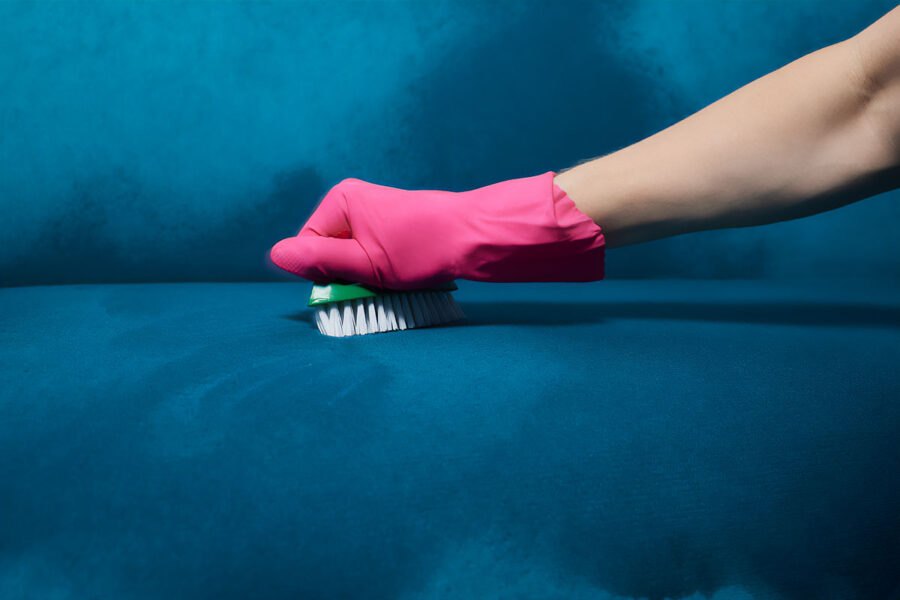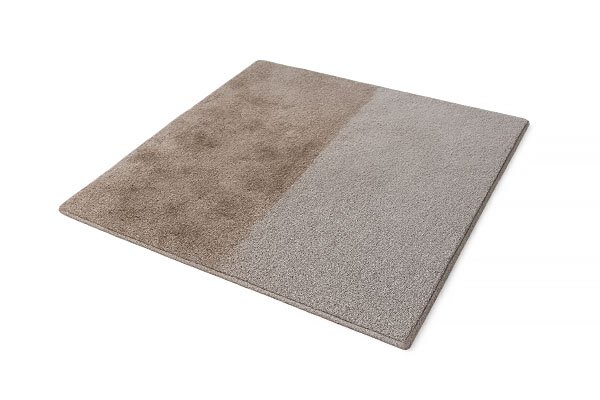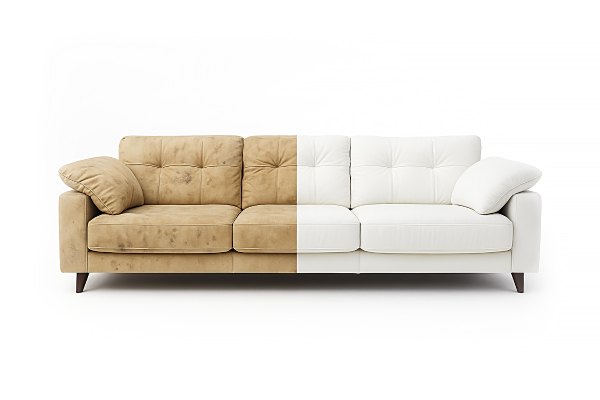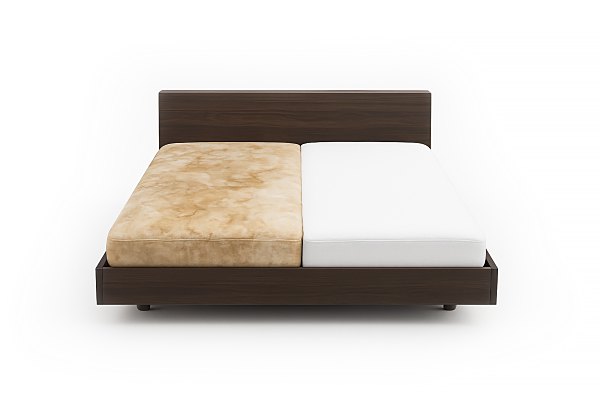Keeping upholstered furniture clean can be tricky. Many people damage their sofas, chairs, and mattresses by using wrong methods. Upholstery fabrics react differently to cleaning agents and techniques. Without proper knowledge, simple cleaning attempts can lead to permanent damage, discoloration, or fabric breakdown.
Cleaning mistakes often happen when rushing to remove a fresh stain. The panic of seeing red wine spill on a light-colored couch might cause hasty decisions. Other times, lack of knowledge about fabric types leads to using harsh chemicals that weaken fibers. Even regular maintenance can harm furniture when done incorrectly.
The cost of replacing damaged upholstery far exceeds the time needed to learn proper cleaning methods. Most upholstery damage is avoidable with basic knowledge. Understanding common mistakes helps maintain furniture appearance and extend its life.
1. Using too much water and soap can damage your furniture
Excess moisture ranks among the most harmful mistakes when cleaning upholstery. While water seems harmless, using too much can lead to serious problems.
Risks of over-wetting
Soaking upholstery with water or cleaning solution creates several issues. First, excess moisture seeps into padding beneath the fabric. This dampness takes a long time to dry, creating perfect conditions for mold and mildew growth. The result? Musty odors and potential health hazards.
Over-saturation also causes fabric shrinkage or discoloration. Natural fibers like cotton and linen are particularly prone to water damage. The fabric might look clean initially but develop unsightly watermarks once dry.
Too much soap creates another problem. Residue left behind after cleaning attracts dirt and dust particles. This makes furniture look dull and get dirty faster than before cleaning.
The right approach to moisture
Use minimal water when cleaning upholstery. A slightly damp cloth works better than a soaking wet one. For spot cleaning, dampen only the affected area rather than the entire piece.
After cleaning, ensure proper drying by increasing air circulation. Open windows or use fans to speed up the process. Never put cushions back until completely dry.
Pro Tip: Mix cleaning solution in a spray bottle with proper dilution. This controls the amount of moisture applied and prevents over-saturation.
Soap considerations
Soap concentration matters as much as water quantity. Dilute cleaning agents properly according to manufacturer instructions. A little goes a long way with upholstery cleaners.
After applying any soap-based cleaner, follow with a clean, damp cloth to remove residue. This extra step prevents dirt attraction and keeps furniture looking fresh longer.
For delicate fabrics, consider foam-based cleaners that use minimal moisture. These products clean effectively while reducing water damage risk.
2. Scrubbing stains aggressively instead of gentle blotting
When facing a fresh stain on upholstery, the instinct to scrub hard seems logical. This approach actually causes more harm than good.
Why scrubbing damages fabric
Aggressive scrubbing breaks down fabric fibers, leading to several problems:
- Fraying and thinning of material
- Permanent discoloration
- Pilling (those small fabric balls that form on surfaces)
- Uneven texture across the furniture piece
The damage often looks worse than the original stain. Once fabric fibers break down, repair becomes impossible.
Scrubbing also drives stains deeper into padding beneath the surface. What starts as a surface mark becomes embedded throughout multiple layers, making complete removal much harder.
Proper blotting technique
Blotting lifts stains without damaging fibers. The technique requires patience but preserves furniture integrity.
Start by using a clean, white cloth or paper towel. Press gently against the stain, allowing the cloth to absorb liquid. Avoid wiping motions completely. Lift the cloth, move to a clean section, and repeat until no more transfer occurs.
For dried stains, slightly dampen a cloth with appropriate cleaner before blotting. Work from the outside edges toward the center to prevent spreading.
Circular motion method
For stubborn stains requiring more than blotting, use gentle circular motions with minimal pressure. This technique lifts dirt without aggressive force.
Apply a small amount of suitable cleaner to a soft cloth. Make small circles working from the stain’s outer edge inward. Let the cleaning agent do the work rather than force.
Pro Tip: For microfiber upholstery, use a soft brush with very light pressure after blotting. The brush lifts the nap and restores texture without damaging fibers.
Patience pays off
Stain removal often requires multiple gentle treatments rather than one aggressive attempt. Allow time between applications for fabric to dry. This approach maintains upholstery integrity while still addressing the stain.
3. Choosing incorrect cleaning products for your fabric type
Upholstery fabrics vary widely in composition and cleaning requirements. Using the wrong product can permanently damage furniture.
Understanding upholstery codes
Manufacturers attach codes to furniture indicating proper cleaning methods:
- W: Water-based cleaners only
- S: Solvent-based cleaners only (dry clean)
- WS: Either water or solvent cleaners
- X: Professional cleaning only
These codes appear on tags attached to furniture or under cushions. Always check before applying any cleaning solution.
Common fabric types and suitable cleaners
Different materials need specific care approaches:
Cotton and polyester blends handle water-based cleaners well. Mild dish soap diluted in water works for these common fabrics.
Microfiber requires special attention. Some microfiber responds well to alcohol-based cleaners, while others need water-based solutions. Always test first.
Leather and vinyl need dedicated cleaners formulated for these materials. Regular fabric cleaners can strip protective coatings.
Silk, velvet, and other delicate fabrics typically require professional cleaning. Home attempts often cause irreversible damage.
Pro Tip: For unknown fabric types, use the mildest possible cleaner first. A solution of white vinegar and water (1:1 ratio) serves as a gentle option for initial testing.
Harmful ingredients to avoid
Certain cleaning agents damage most upholstery types:
- Bleach causes color fading and weakens fibers
- Ammonia damages natural fibers and some synthetic materials
- Strong all-purpose cleaners contain harsh chemicals that break down fabric
- Acidic cleaners can alter dye colors
Avoid these ingredients unless specifically recommended for the particular fabric type.
4. Skipping the pre-cleaning vacuum and brush step
Many people jump straight to stain treatment without proper preparation. This fundamental mistake makes cleaning less effective and potentially harmful.
Why pre-cleaning matters
Vacuuming removes surface debris before applying any moisture. Without this step, dirt particles mix with cleaning solutions to create mud. This mud then gets pushed deeper into fabric fibers.
Pre-cleaning also reveals the true extent of stains. What looks like a large stain might actually be a small spot surrounded by loose dirt.
Regular vacuuming prevents dirt buildup that leads to premature fabric wear. Dust and debris act like sandpaper against fibers during normal use.
Effective vacuuming technique
Use the right attachments for upholstery cleaning:
- Soft brush attachment for delicate fabrics
- Crevice tool for seams and tight spaces
- Upholstery attachment for general surfaces
Set the vacuum to low or medium suction to prevent pulling on loose threads or damaging fabric.
Work methodically across the entire piece, including under cushions and along seams where debris collects. Pay special attention to areas with high use.
Brushing benefits
For certain fabrics, gentle brushing helps loosen embedded dirt before vacuuming. Use a soft upholstery brush and work in the direction of the nap or grain.
Brushing also helps identify pill balls or loose threads that need attention before cleaning begins.
Pro Tip: Keep a lint roller handy for quick touch-ups between deep cleanings. This simple tool removes pet hair and surface debris without any moisture.
Preparing for spot treatment
After vacuuming, assess stains carefully.
Different stain types need different treatments:
- Oil-based stains (food grease, makeup) need degreasers
- Protein stains (blood, food) respond to enzymatic cleaners
- Tannin stains (coffee, wine) require specific stain removers
Identifying the stain type helps select the right cleaner and technique.
5. Neglecting to test cleaners on an inconspicuous area first
Skipping the patch test ranks among the most regrettable upholstery cleaning mistakes. This simple step prevents widespread damage.
Potential reactions to cleaners
Cleaning products can cause various adverse reactions:
- Color fading or bleeding
- Fabric shrinkage
- Texture changes
- Water rings or marks
- Breakdown of protective coatings
These reactions might not appear immediately but develop as the fabric dries. Without testing first, the damage might extend across the entire furniture piece.
How to perform a proper test
Choose a hidden area for testing:
- Under cushions
- Back corner near the floor
- Inside arm panel
Apply a small amount of the cleaning solution using the same method planned for the visible areas. Allow it to dry completely before assessing results.
Check for any color change, texture alteration, or other adverse effects. If the test area shows damage, try a different cleaner or consult a professional.
Pro Tip: Take photos of the test area before and after applying cleaner. This helps spot subtle changes that might not be immediately obvious.
Testing timeframe
Allow sufficient time for complete reaction assessment. Some effects take hours to develop fully. Rushing this process defeats its purpose.
For water-based cleaners, allow at least 2-4 hours for drying. Solvent-based products might require 6-8 hours before final evaluation.
If possible, test multiple cleaners simultaneously in different spots. This efficiency helps find the best option faster.
When to seek professional advice
If multiple cleaners fail patch tests, the furniture might need professional attention. Specialty fabrics often require commercial-grade products not available to consumers.
Antique or valuable pieces warrant professional assessment before any cleaning attempt. The investment protects against potential damage.
Book professionals to clean upholstered furniture
Sometimes, professional cleaning services provide the safest and most effective solution for upholstery care. SevenClean in Sydney offers specialized services for various upholstered items.
SevenClean services
Upholstery cleaning services
SevenClean provides comprehensive upholstery cleaning that addresses various fabric types. Their technicians assess each piece individually to determine the appropriate cleaning method.
The company uses specialized equipment that extracts dirt from deep within fibers without over-wetting. This technology removes stains while minimizing moisture damage risk.
For delicate fabrics, SevenClean applies appropriate cleaning agents that preserve color and texture. Their expertise extends to specialty materials that challenge DIY approaches.
Mattress cleaning benefits
Beyond furniture, SevenClean offers mattress cleaning services that improve sleep quality.
Their process removes:
- Dust mites and allergens
- Bacteria and fungi
- Sweat and body oil stains
- Spill marks and odors
The company uses extraction methods with specialized cleaning agents for mattresses. These products target organic contaminants while remaining safe for health.
SevenClean’s mattress cleaning happens directly in homes, eliminating transportation hassles. The service includes both single and double-sided cleaning options based on needs.
Carpet and rug care
SevenClean extends expertise to floor coverings with carpet and rug cleaning services.
Their approach includes:
- Pre-treatment of stains and high-traffic areas
- Hot water extraction that removes embedded dirt
- Specialized spot treatment for stubborn marks
- Proper drying techniques that prevent mold growth
The company uses eco-friendly cleaning products that remain safe for households with children and pets. These solutions clean effectively without harsh chemicals.
Pro Tip: Schedule professional upholstery cleaning annually, even without visible stains. Regular maintenance extends furniture life and maintains a healthier indoor environment.
Conclusion
Avoiding common upholstery cleaning mistakes saves furniture from premature aging and damage. The five errors discussed—using excess water and soap, aggressive scrubbing, choosing wrong products, skipping pre-cleaning, and neglecting patch tests—account for most upholstery damage in homes.
Taking time to learn proper cleaning techniques pays off through extended furniture life. Simple steps like checking fabric codes, using minimal moisture, and gentle blotting make significant differences in results. These practices maintain both appearance and structural integrity of upholstered pieces.
For challenging stains or regular maintenance, professional services like SevenClean offer expertise and equipment beyond typical household capabilities. Their specialized knowledge helps address difficult fabrics and stubborn marks safely.
The key takeaway remains: gentle, informed cleaning preserves upholstery best. Rushing with harsh methods often causes more harm than the original stain. Patience and proper technique maintain furniture beauty for years to come.
Next time facing a spill or stain, remember these guidelines before taking action. The extra minutes spent on proper preparation and technique save hours of regret later. With correct methods, upholstered furniture stays beautiful much longer, protecting both the investment and home comfort.





